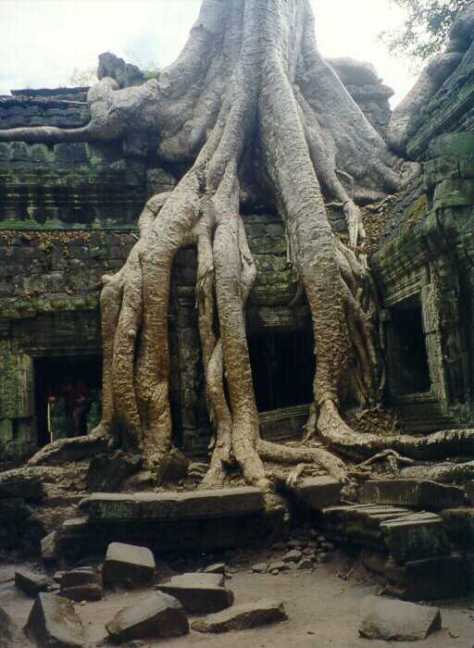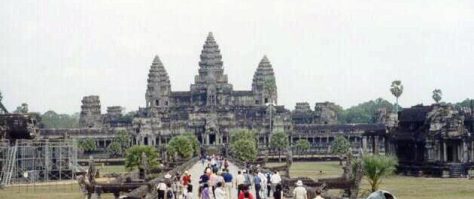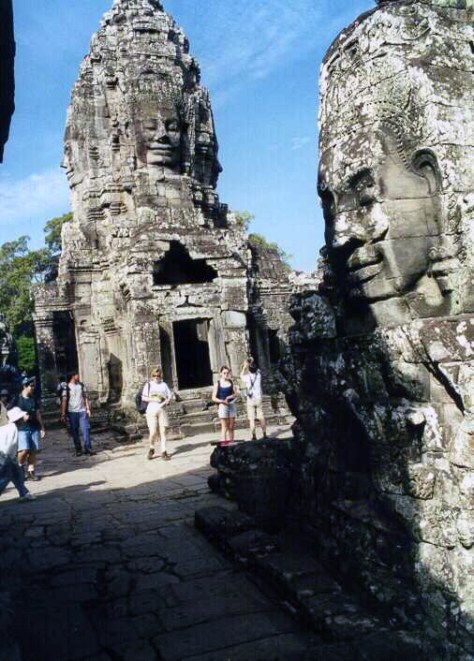 Over my career, I was very fortunate to be able to combine business trips with short visits to some of the world’s iconic heritage sites, or take time out for a quick vacation in the region without having to fly half way round the world.
Over my career, I was very fortunate to be able to combine business trips with short visits to some of the world’s iconic heritage sites, or take time out for a quick vacation in the region without having to fly half way round the world.
When we lived in Peru, I visited Machu Picchu a couple of times; almost anywhere you travel in Peru you are immersed in archaeology. In Central America we had the opportunity to visit the pyramids of Tikal in Guatemala (and I hope to post photos from here once I have digitized the slides), and also those at Teotihuacan, just north of Mexico City. But one of the most impressive sites must surely be the huge temple complex at Angkor Wat in Cambodia. And we had the chance to visit there in December 2000.
On flights from Bangkok to Manila I have often overflown Angkor Wat, and even from 30,000 feet its extent looks truly impressive (even if there is also evidence over the whole countryside of the intense bombing that Cambodia suffered over several decades of war).
Angkor Wat is located in northwest Cambodia, near the town of Siem Reap, and near the Tonlé Sap, a huge seasonally flooded lake that acts as an overflow for the Mekong River during its flooding.
While we refer to Angkor Wat as a ‘site’, there are in fact many temples and other complexes covering a large area, apparently about 200 square kilometers. The beauty of the stone carvings, the iconic stone faces pointing in four directions, and the wonder of the forest reclaiming the various temples all add to the mystery of Angkor.
I’m not going to attempt to describe in detail what Angkor Wat has to offer, but a visit there has to last more than just one day. We stayed there for three nights, and although we were able to many of the sites and temples, there are plenty more mysteries to uncover, hidden by the jungle that has reclaimed its dominance over the area.
Some of the temple complexes, like the Angkor Wat site itself and Bayon are large with many beautiful buildings to explore, others are much smaller, comprising just a couple of buildings or so. Just click on these photos to open web albums (scanned images rather than original digital photos).
When we visited, it was possible to move freely around all the sites, look inside the temples, climb the towers – and really explore. While it was quite busy in some sites, we did manage to get away from the bulk of the tourists. But the increasing number of visitors to Angkor Wat is now giving rise to concerns, as this recent story on the BBC website discusses.
Settlements at Angkor Wat stretch back thousands of years, but much of what we see today was constructed from about the 11-12th centuries onwards, reaching its peak a couple of centuries later. I’ve read estimates of more than 1 million people were involved in building the temples. And for an ex-rice scientist like myself, that begs the question about the extent and productivity of rice agriculture that was required to keep this huge population fed.
In addition to the Angkor Wat and Bayon sites, these are the other sites you can ‘visit’:
- Angkor Thom
- Terrace of the Elephants
- Phimeanakas
- Preah Khan
- Neak Pean
- Prasat Kravan
- Banteay Kdei
- Preah Rup
- East Mebon
- Ta Prohm
- Ta Keo
- Chau Say Tevoda
Let me finish with a quote from the Introduction in Dawn Rooney’s guidebook to Angkor Wat [1]: The temples startle with their splendour and perfection, but beyond the emotions they evoke lie complex microcosms of a universe steeped in cosmology. While a thorough understanding may be out of reach for many, the monuments’ profound beauty touches everyone . . .
~~~~~~~~~~~~~~~~~~~~~~~~~~~~~~~~~~~~~~~~~
[1] Rooney, D (1997). Angkor – an Introduction to the Temples. Passport Books, Lincolnwood (Chicago), Illinois 60646-1975.
ISBN: 0-8442-4766-9




